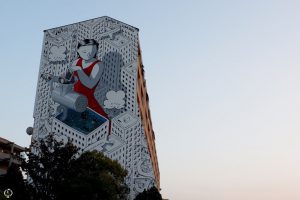
When it doesn’t hit the headlines, Fontanelle is a quiet neighbourhood.
I loved Pescara for being so silent, and yet the city gets even more serene in Fontanelle. The neighbourhood is pervaded by a calming hush, which is occasionally interrupted by a church bell rung from the top of a little hill.
Or by the local teens doing stunts on bikes across the courtyards, or by horns honking to get the attention of those who are inside homes – until they eventually look out the window to respond by yelling something back out onto the street.
Crime and corruption might have made Fontanelle notorious, but the daily life of this neighbourhood is less newsworthy. Daily life in Fontanelle is the old lady with the hoe, who takes care of the public spaces that have been neglected by the town’s municipality for far too long.
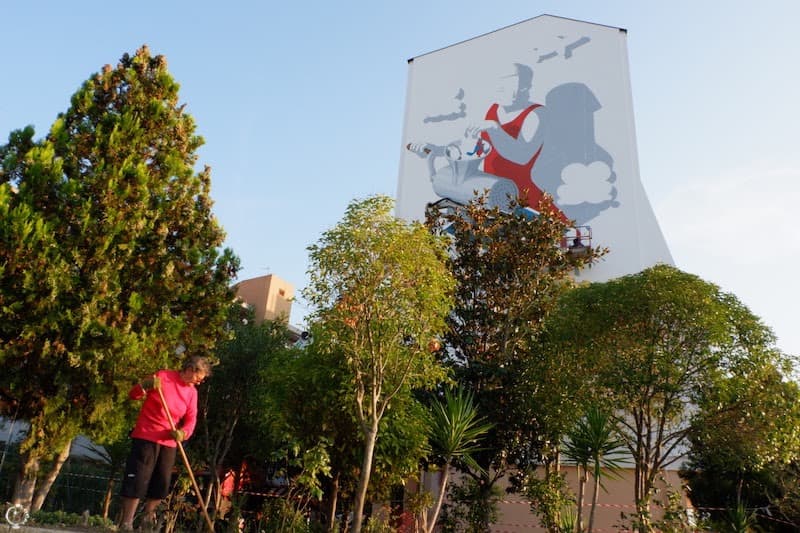
Her garden was roped off when Italian street artist Millo began painting ‘The Biggest Mural In The City Where He Lives.’ She gripped her hoe with the strength of her history and swept away the first of the autumn leaves with intention. It was as if she was trying to drown out the noise of the lift that carried the artist to the top of one of the largest walls he’s ever painted.
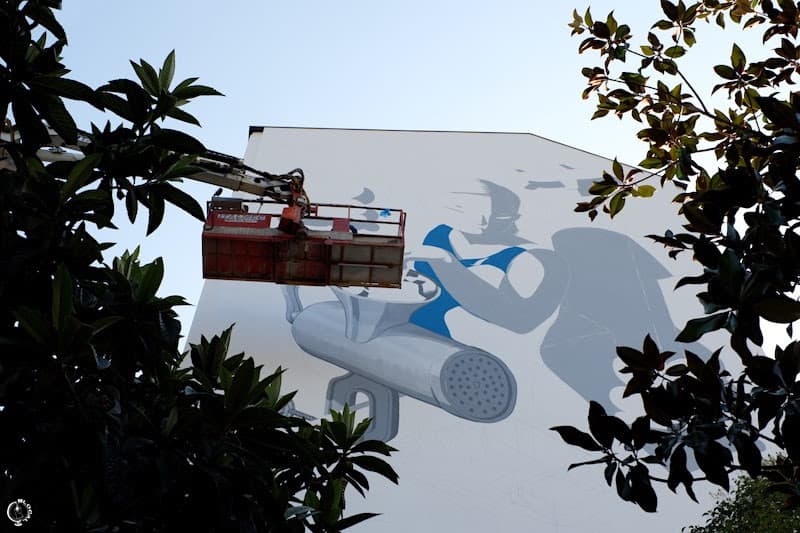
She wasn’t the only one to view Millo suspiciously. Those who’d lived with the spread of mould on their ceilings were quite puzzled, really. After years of disregard, the municipality was finally reminded of their decadent buildings. But just to colour one wall. It seemed haphazard.
“When can we fix the road?” they wanted to know. And to solve the practical life issues they were dealing with, like “The rain runs down the walls and pools on the floor of our apartments.”
They wanted cameras to shoot their reality, not the artist at work. It’s understandable.
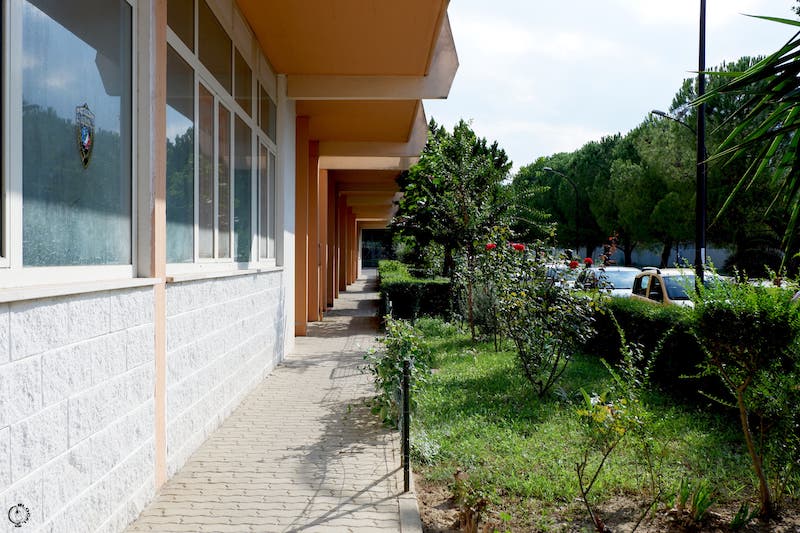
But painting with confidence, by the end of the first day Millo had completed the initial sketch. He made it with an almost-visible colour, as if he were tiptoeing his way through the neighbourhood – the kind of touch that perfectly fits his mellow personality.
The lines were so soft that cameras couldn’t capture them, to the great regret of Bruno. He’s a wizened man who’d tried to snap a photo of the wall for the entire day. Disappointed, he turned to us and began orchestrating a group picture of the team.
Bruno got luckier on the next day, when Millo painted the shades. He shaped the main character and objects that would stand out from his iconic background.
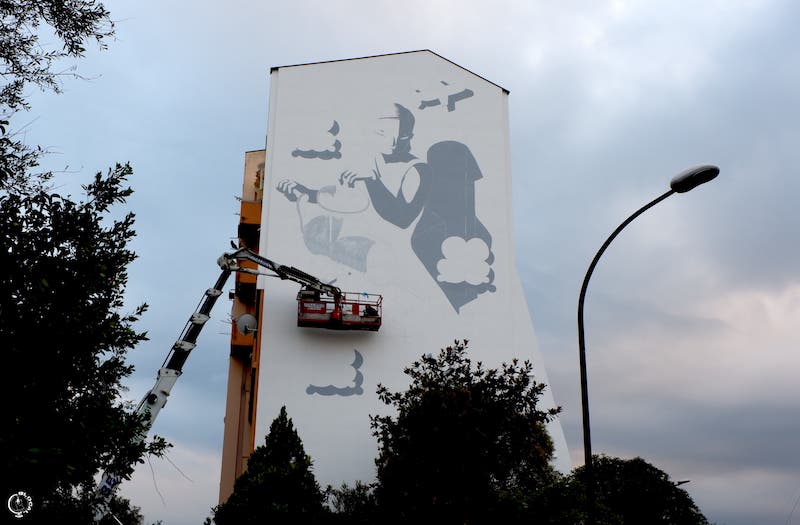
“She is making tomato sauce,” the lady with the hoe guessed.
“Would you mind bringing your food grinder and posing for a photo?” Bruno asked her.
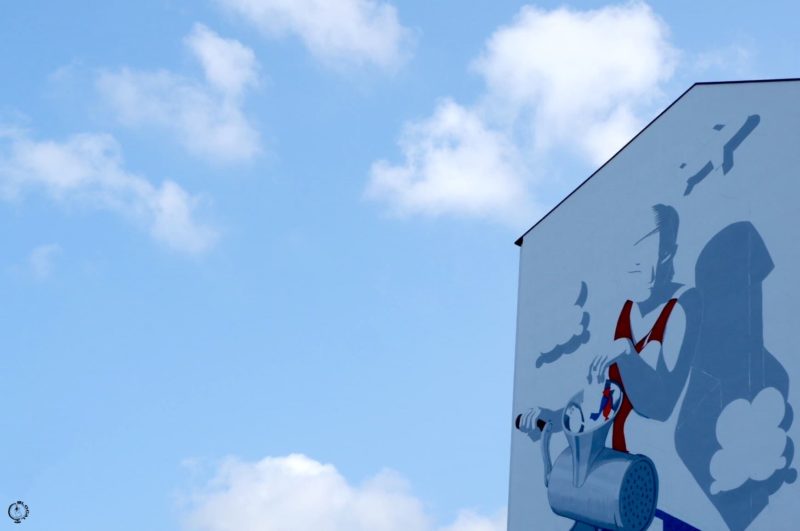
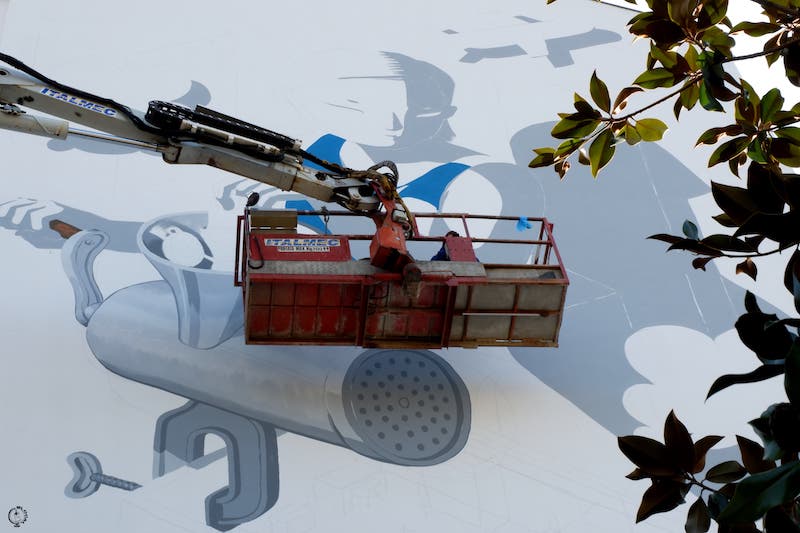
People from downtown Pescara and nearby cities came to Fontanelle and joined in the discussion.
“Is the character asleep a boy or an adult?” they wanted to know.
“A ninja turtle,” said Millo, cutting off the conversation with a straight face. :-D
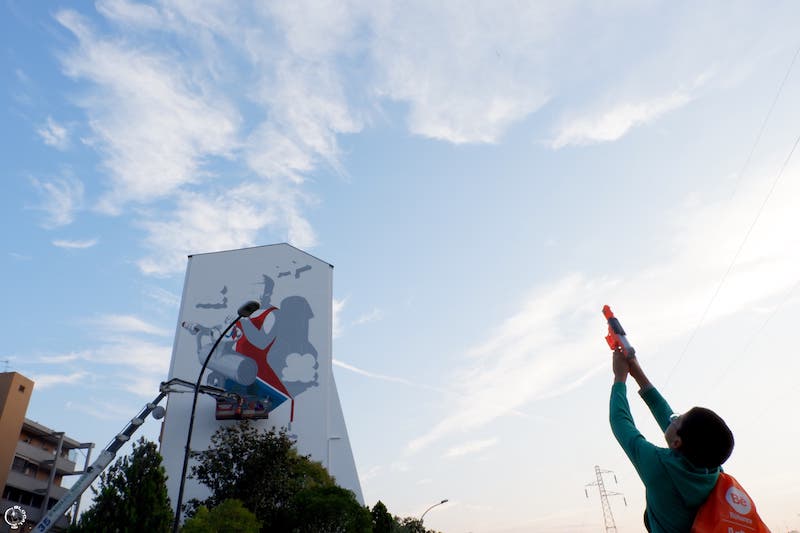
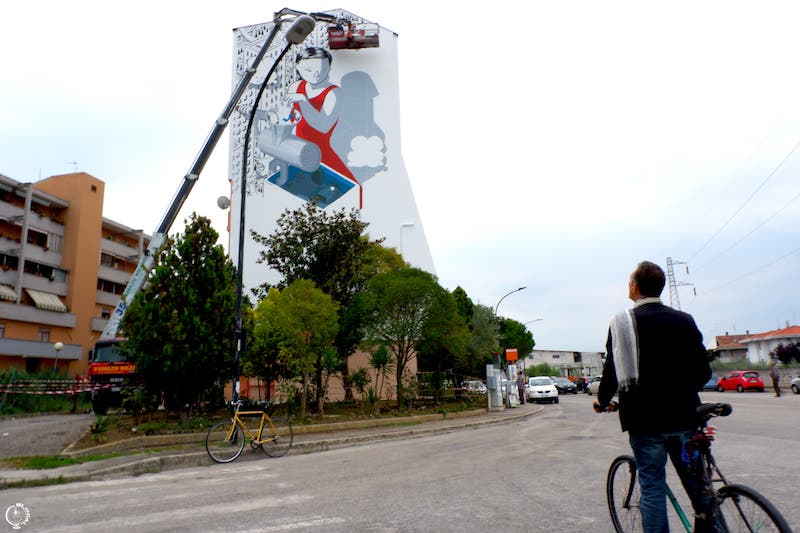
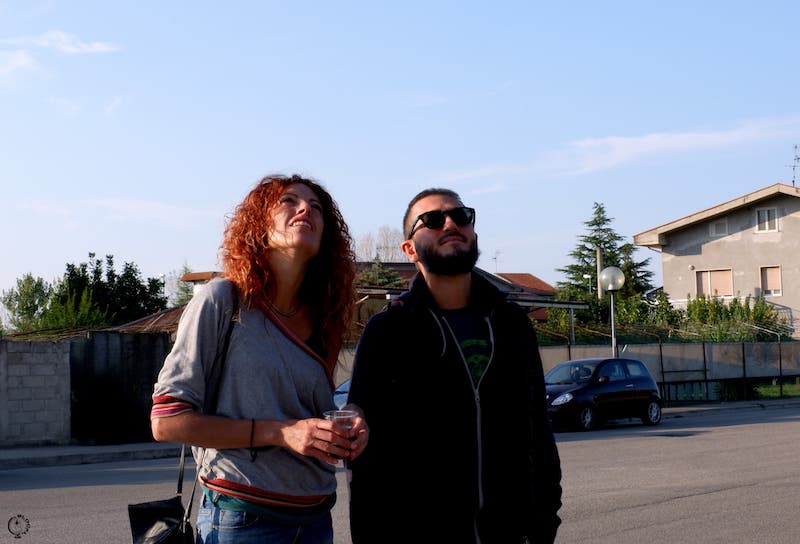
All of this attention was by no means unusual for this neighbourhood, which has been so left out. Unlike other problematic areas in Pescara, which have eventually got incorporated into the urban development of the city, Fontanelle is still secluded between the airport and the open fields.
Millo himself picked the wall in Fontanelle over one in the city centre, because he wanted to bring something beautiful to the area. And he picked one of the many lateral dull walls of Fontanelle’s council houses, because he envisions further mural art possibilities in the neighbourhood.
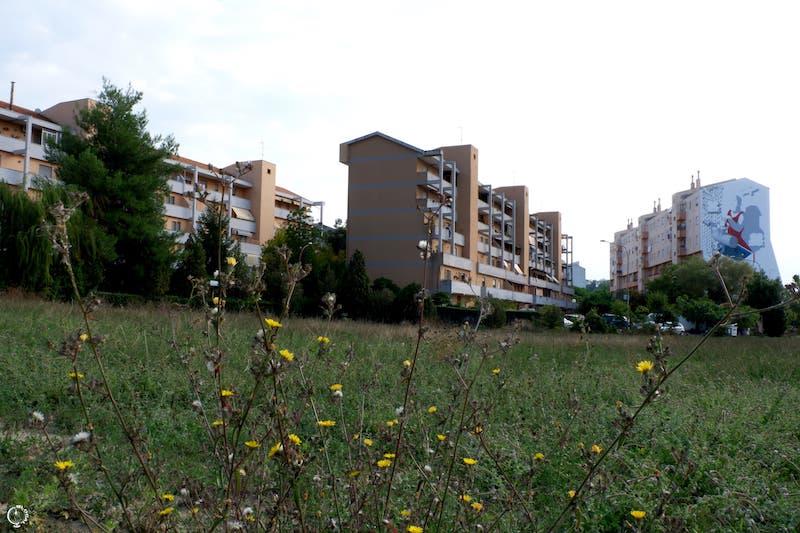
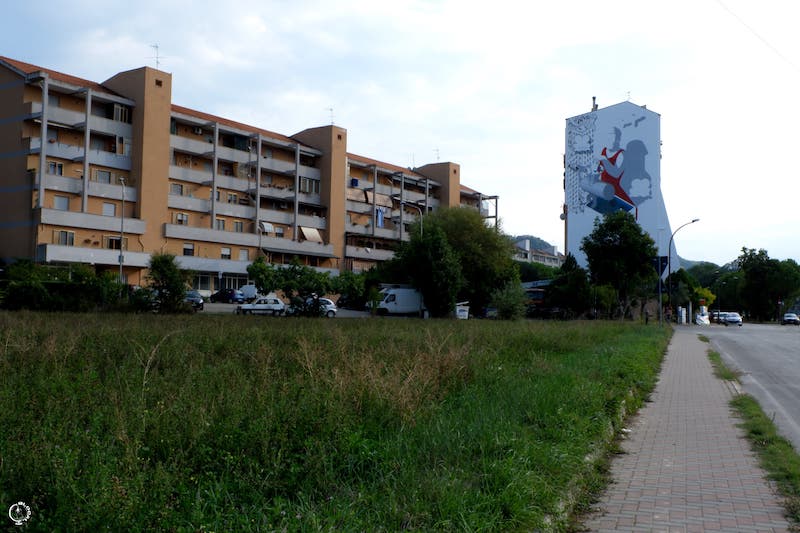
All of this attention was pretty much unwanted by drug dealers and other ‘traders,’ who were the only ones to drive past the wall without slowing down. Everybody else looked up, mesmerized, beyond them.
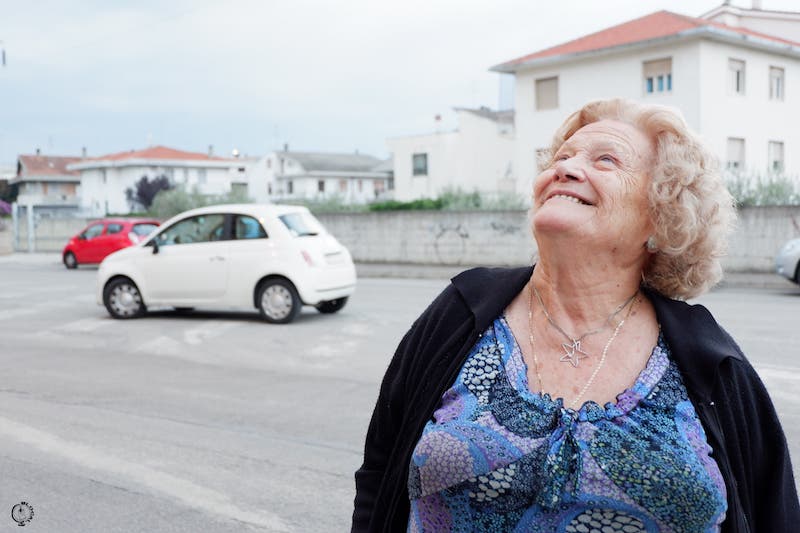
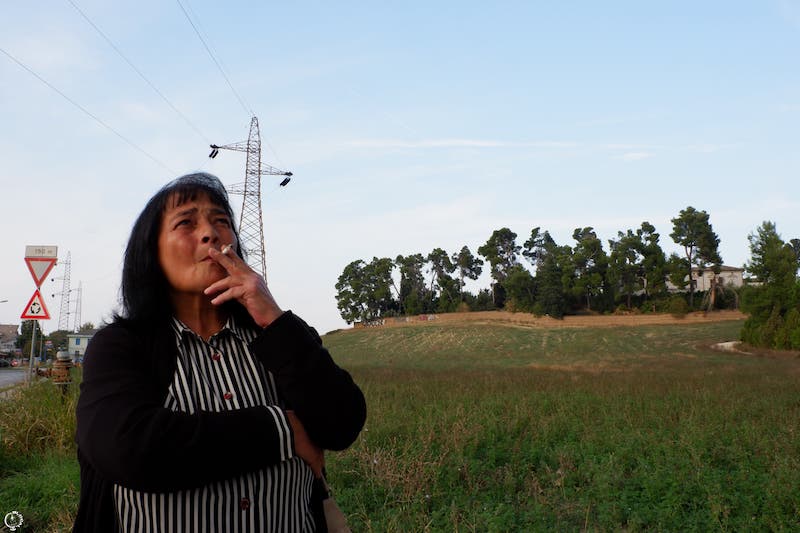
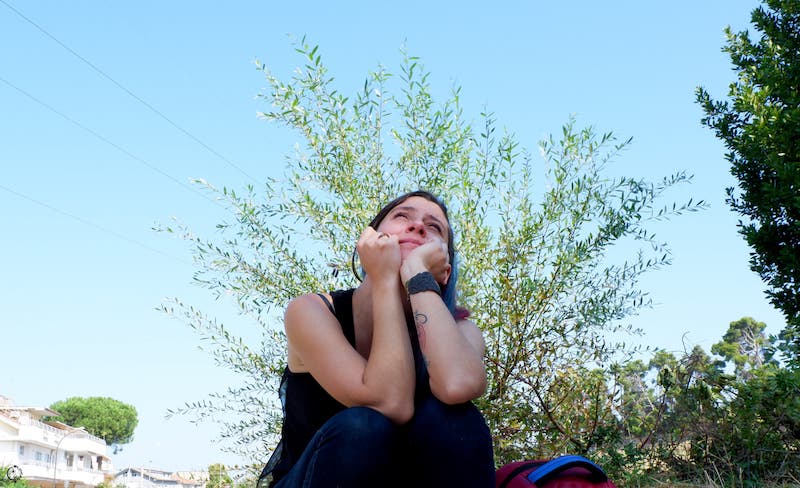
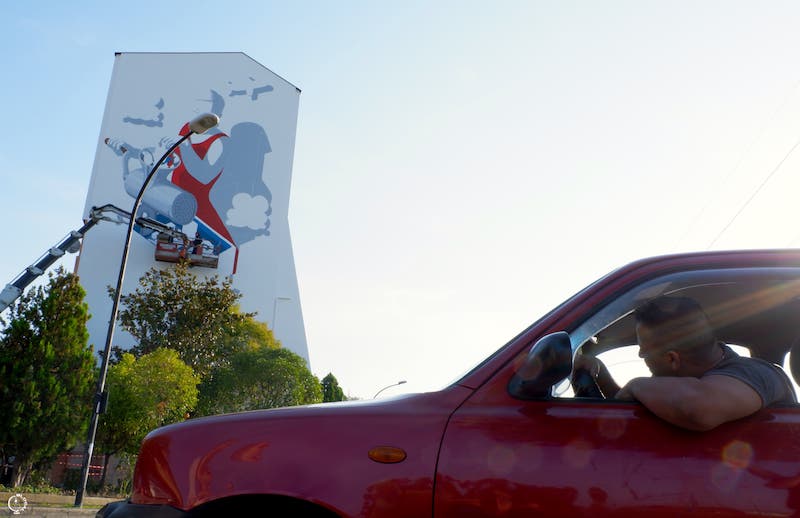
It didn’t matter what you were driving. Shiny, expensive cars, cars with dents and faded stickers on the windows stopped in front of the wall. Jaws dropped at Millo, angel-like, painting this huge wall without the help of a projector or a grid. Not even tape.
All he used was a paint brush, slowly smoothed across the wall with a soft touch – as Zen and fluid as his personality.
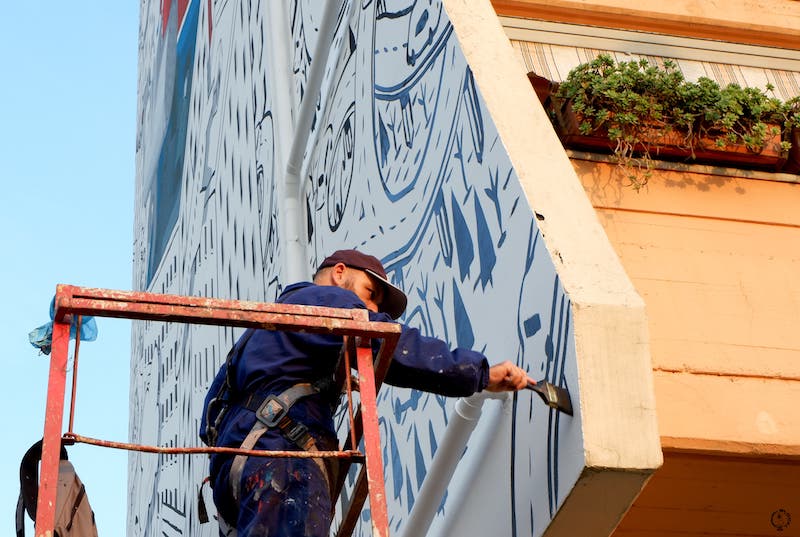
More Zen than him were only his spectators: we watched him for hours, looking upwards from the street, or downwards from cracked balconies framed with dangling electrical cords and satellite dishes.
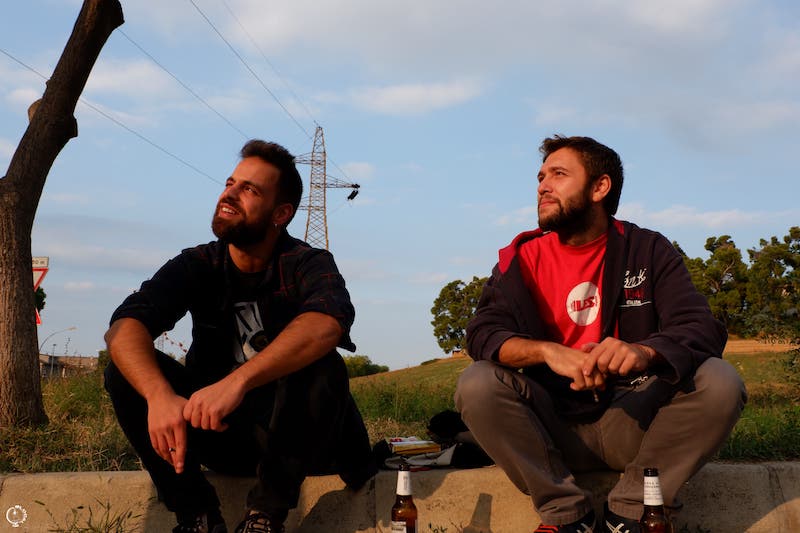
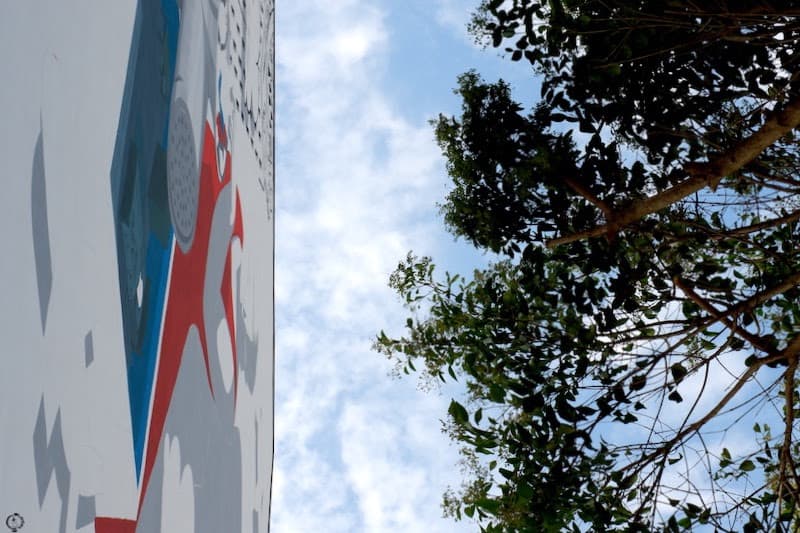
It only took some red wine and fiadoni (traditional savoury pies) to turn a spontaneous gathering into a genuine street party. The guys at Pepe Collettivo were amazing. Not only did they take care of all of the bureaucracy and organization behind such a big wall, but they also spent the production week easing the whole operation by chatting with residents using their contagious smiles.
“This is just the first step, it’s a sign that the municipality now wants to fix the neighbourhood,” they reassured the residents.
“After painting large-scale murals all around the world, Millo was finally invited to do one in his city – and he chose to do it in Fontanelle,” they said, providing a solid background context.
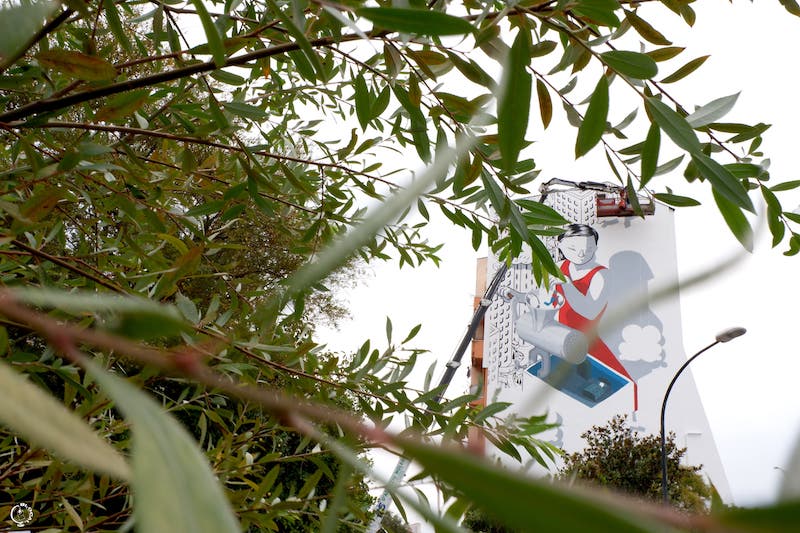
The crowd grew and mingled more every day. One girl brought a different delicious cake each day, which never failed to pass the severe examination of Fontanelle’s housewives.
Peter, who lived the whole week as Millo’s shadow to record a time-lapse, invited his friends over as if the street were his own living room. They came with either beer or coffee –regardless of the time of the day – and hung around enjoying the sunshine, which blessed us all with a lovely autumn tan. Bruno couldn’t believe he had so many different subjects posing for his photos; he shot each one of us – including the artist – like an expert orchestra leader.
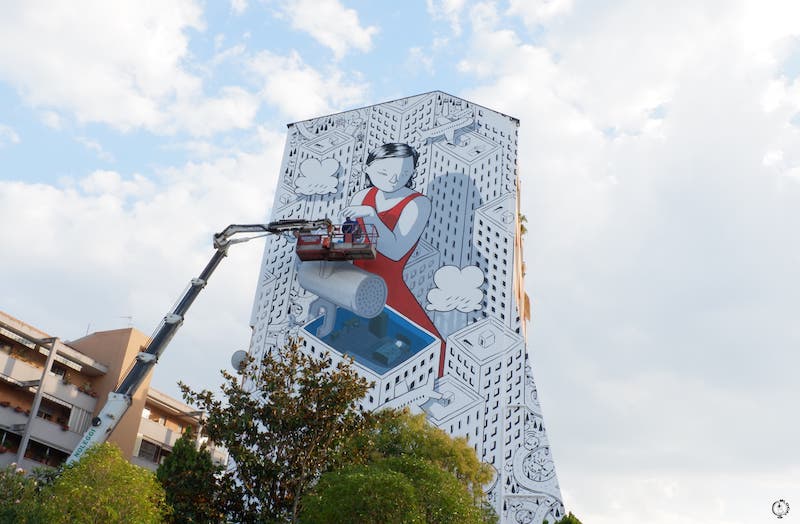
A class of sixth graders came to see the artist at work.
“Aren’t you afraid of being so high up in the sky?” they asked Millo when he came out from the lift.
“Do you learn the language of every country where you paint?” they wanted to know.
Then they sat on the sidewalk, eyes wide open in awe. Of course, Bruno got inspired by the different colours of their backpacks.
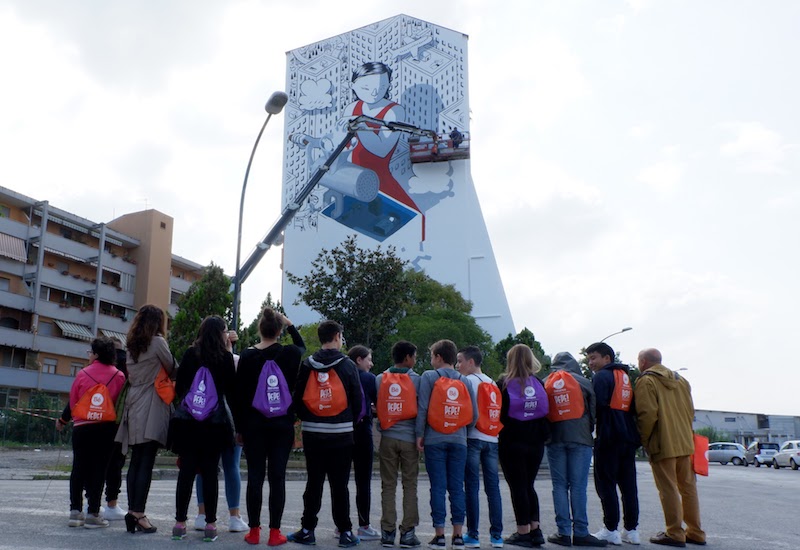
There were all kinds of people gathering in a square that – up until then – was only experienced by two cat ladies. They kept coming to feed the stray cats, although now they were all dressed up, because Bruno was downstairs armed with his camera and together with several journalists.
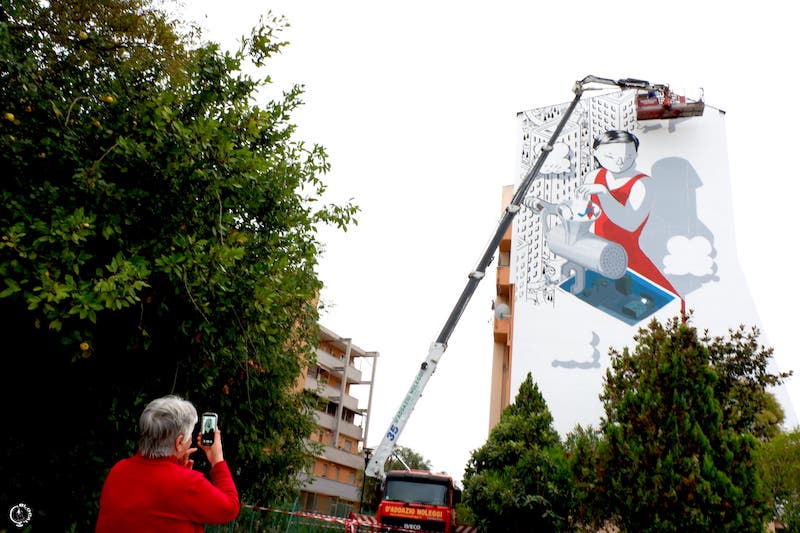
The coming and going of journalists and cameramen didn’t go unnoticed by the municipality, either. Overnight, all of the garbage was collected and Fontanelle looked cleaner than ever.
“At least, they did something,” the lady with the hoe said.
“It still rains inside our flats, though,” someone replied, “and now the mould will also ruin this beautiful painting,” he added, fairly concerned.
Then a small girl said: “I’d hate to see it get mouldy. People were scared when I said that I’m from Fontanelle, but now I can say that I live where Millo painted a mural.”
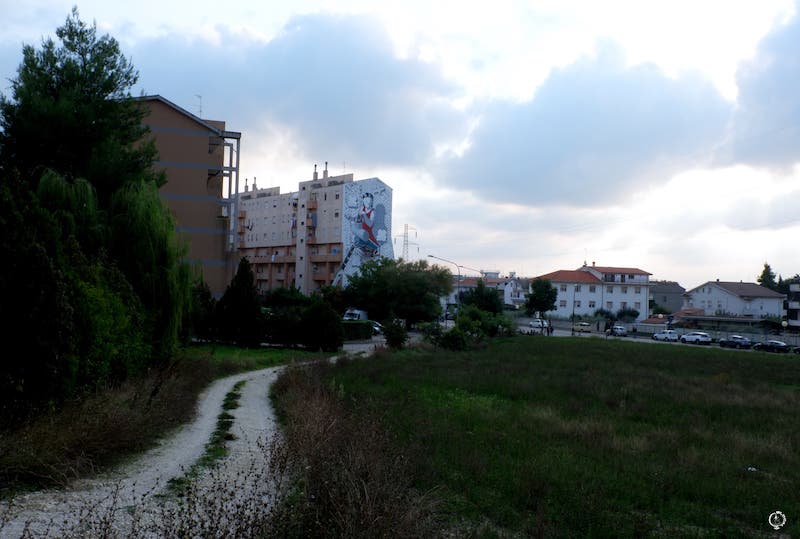
Opposite the wall, there is the field where the lady with her hoe hasn’t arrived yet. It’s covered with wild herbs and every time Bruno stepped on them looking for the perfect picture, an aromatic scent was carried by wisps of wind.
We got lost in it while looking at Millo painting the background, which is almost a living organism in itself. When it comes to those urban sketches that wrap (and yet isolate) his characters, Millo paints as fast as a printer.
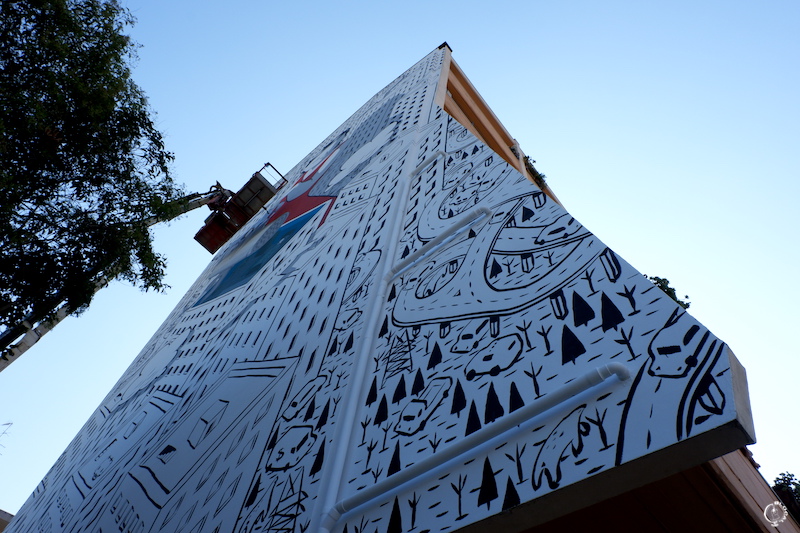
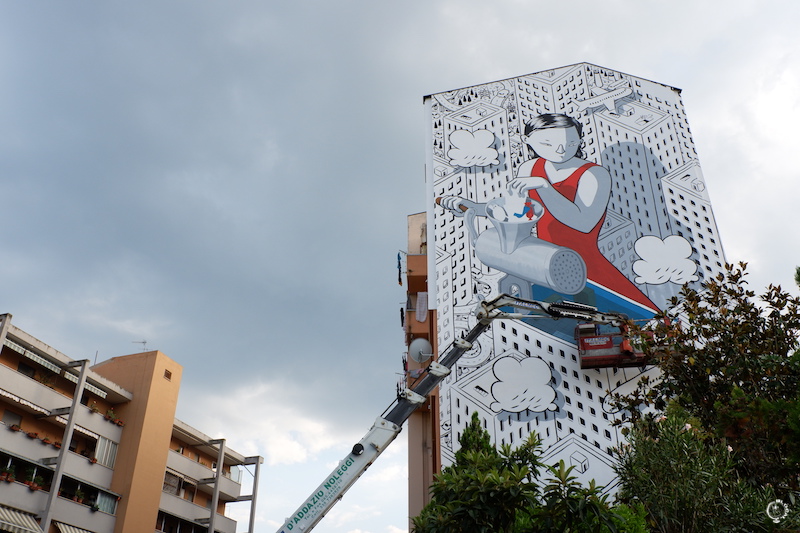
The shapes are sketched yet sharp, and left uncoloured. Or – even better – coloured by using ‘Millo’s White,’ which is a state of mind before being a colour. It’s the chromatic depiction of the candour of his characters.
“When will he colour the city?” the lady with the hoe wanted to know.
“He’s keeping it black and white to make the main character stand out,” Peter replied.
“Yes, it will stay like that. I Googled what he does,” Bruno confirmed.
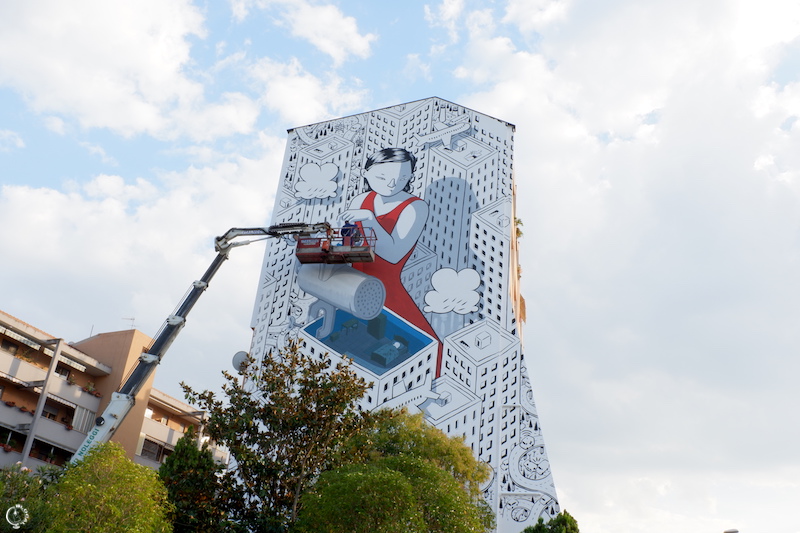
Until the last day, residents and non-residents alike kept guessing the meaning of Millo’s artwork.
“He painted a mincer because in Fontanelle we are starving,” some said.
“He painted a mincer because in Fontanelle we are cannon fodder,” others said.
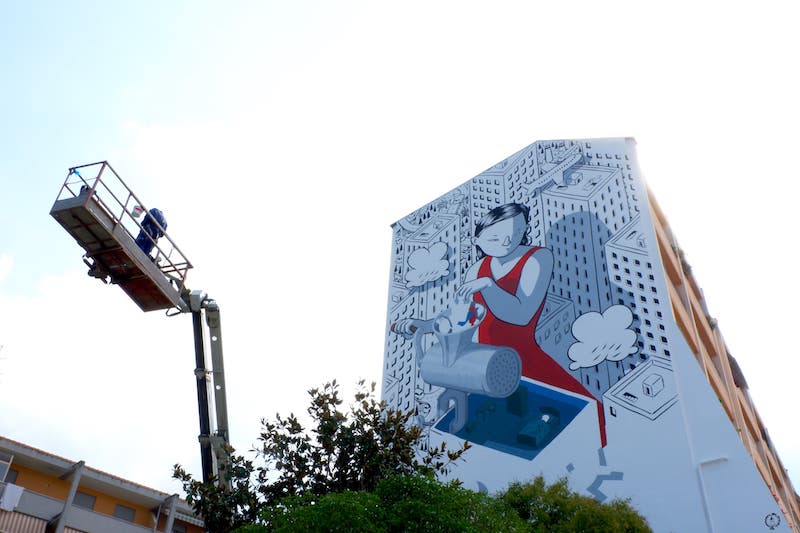
This time Millo chose a rather controversial object to convey his optimistic message. It wasn’t until the very last moment that he accomplished the hard task of showing a positive interpretation of the mincer: a dream maker.
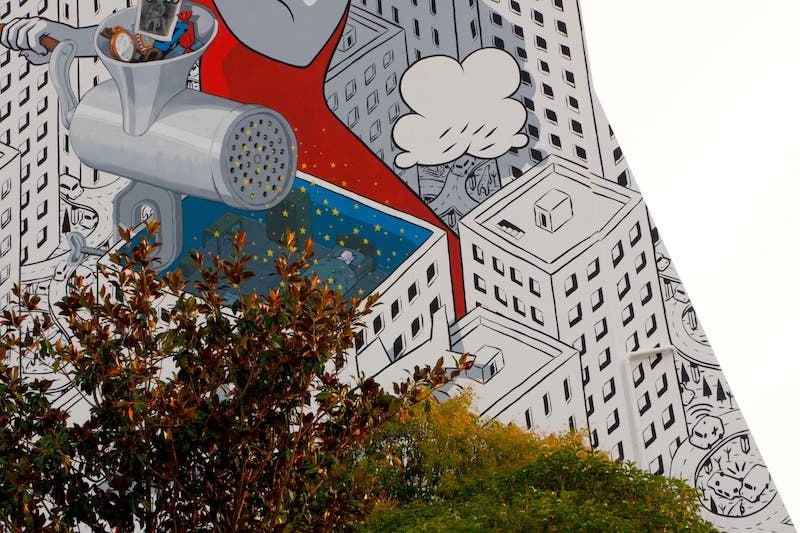
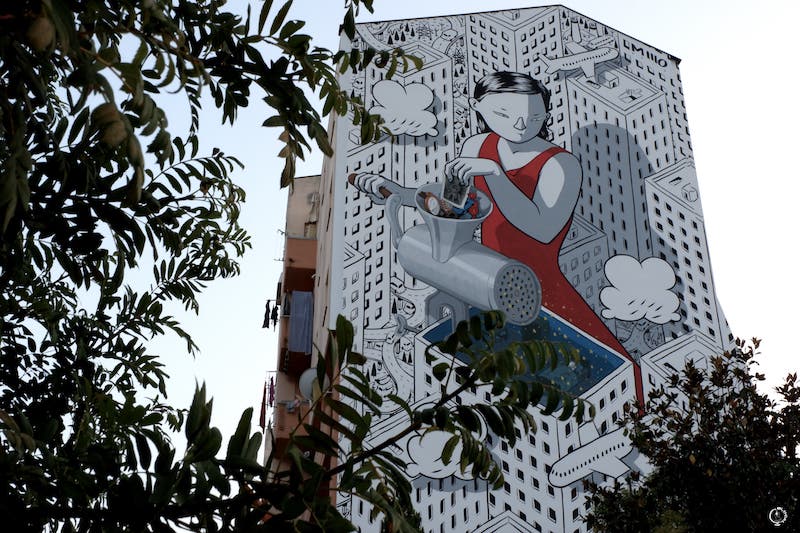
If Millo’s artwork shows the world through the eyes of a child, this one is more dreamlike than ever.
It reminds us of the importance of dreaming in a social context, one that might work to dismiss dreamers. Because it doesn’t matter where you’re from: no one can take away your dreams.
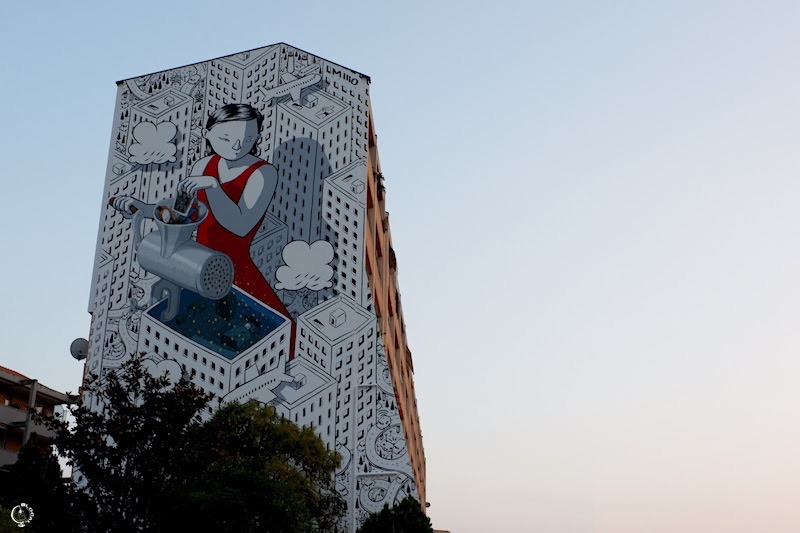
A spontaneous applause arose from the people gathered together, as Millo placed his signature at the top of the artwork.
“Whose blue car is this? If we move it a bit further I’ll take a beautiful final picture of the wall.”
Thanks to Pepe Collettivo for having me over: watching Millo at work was simply amazing!